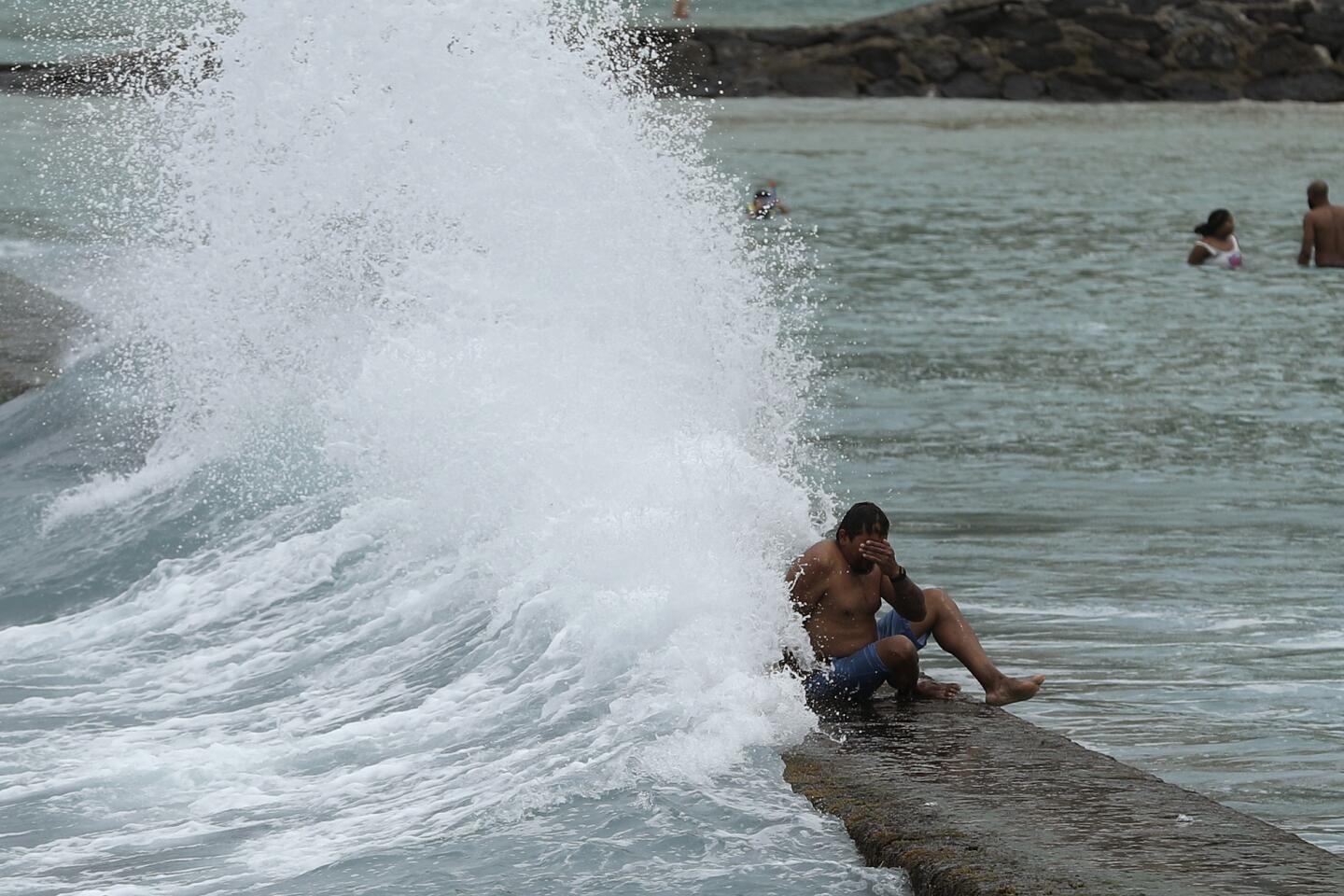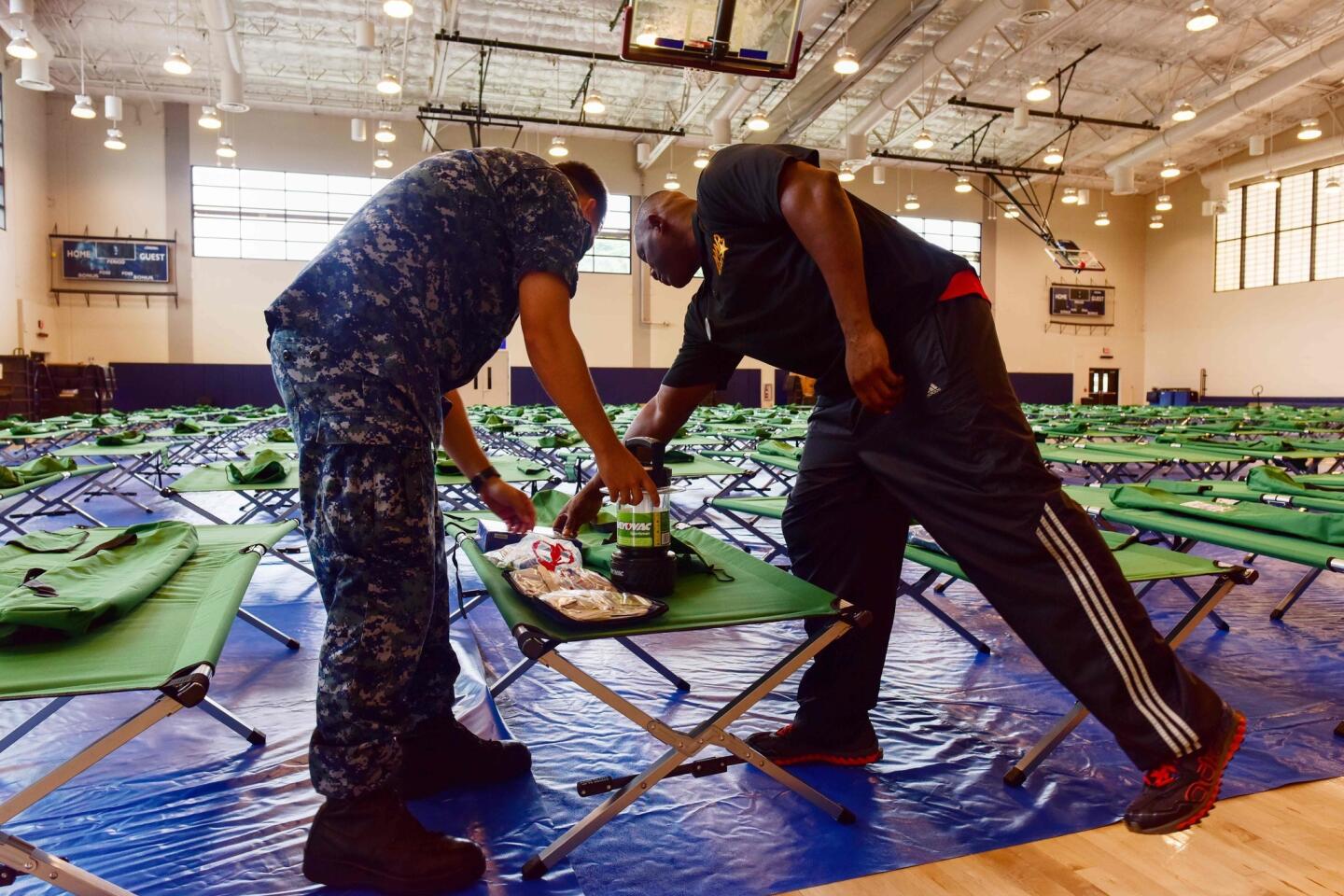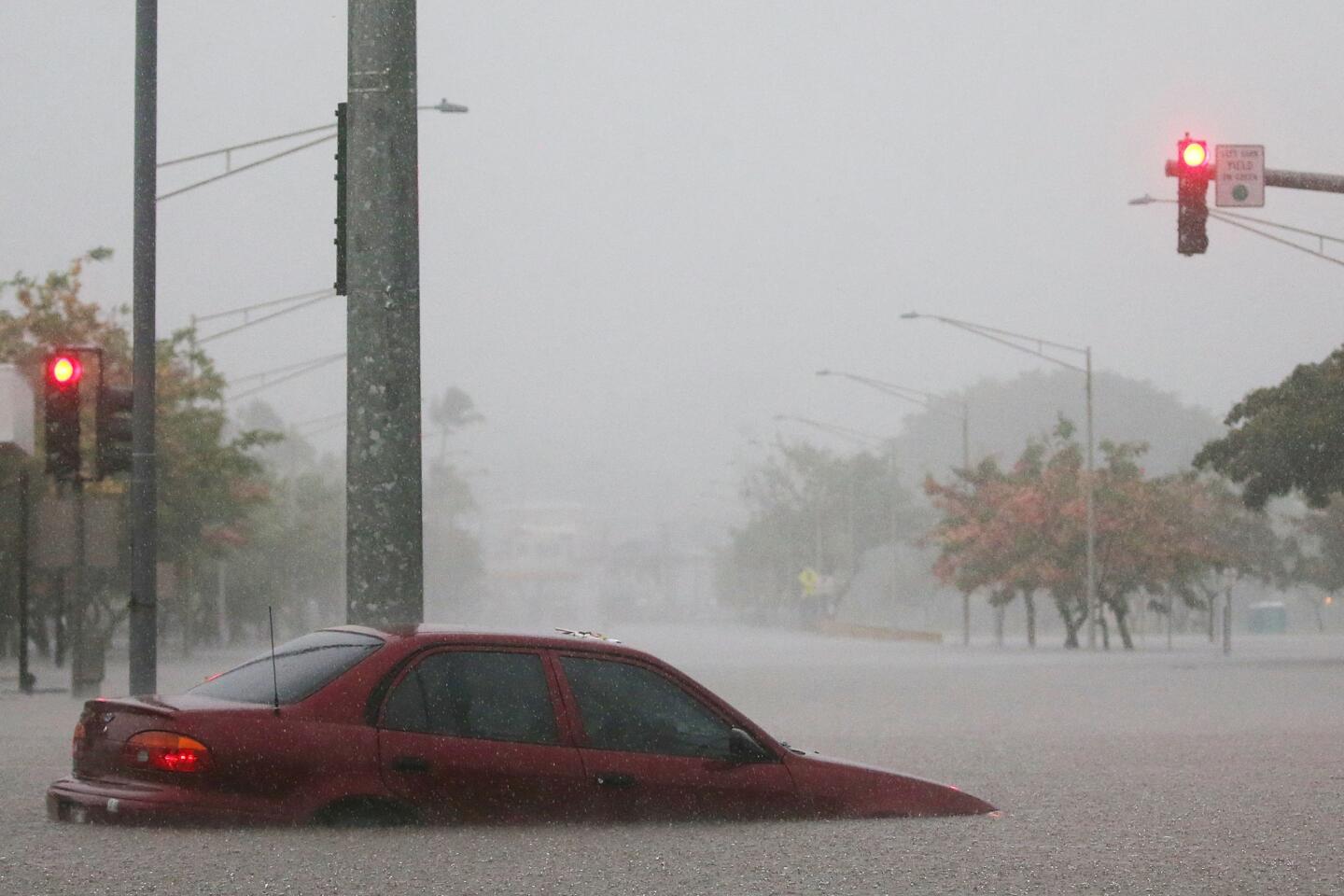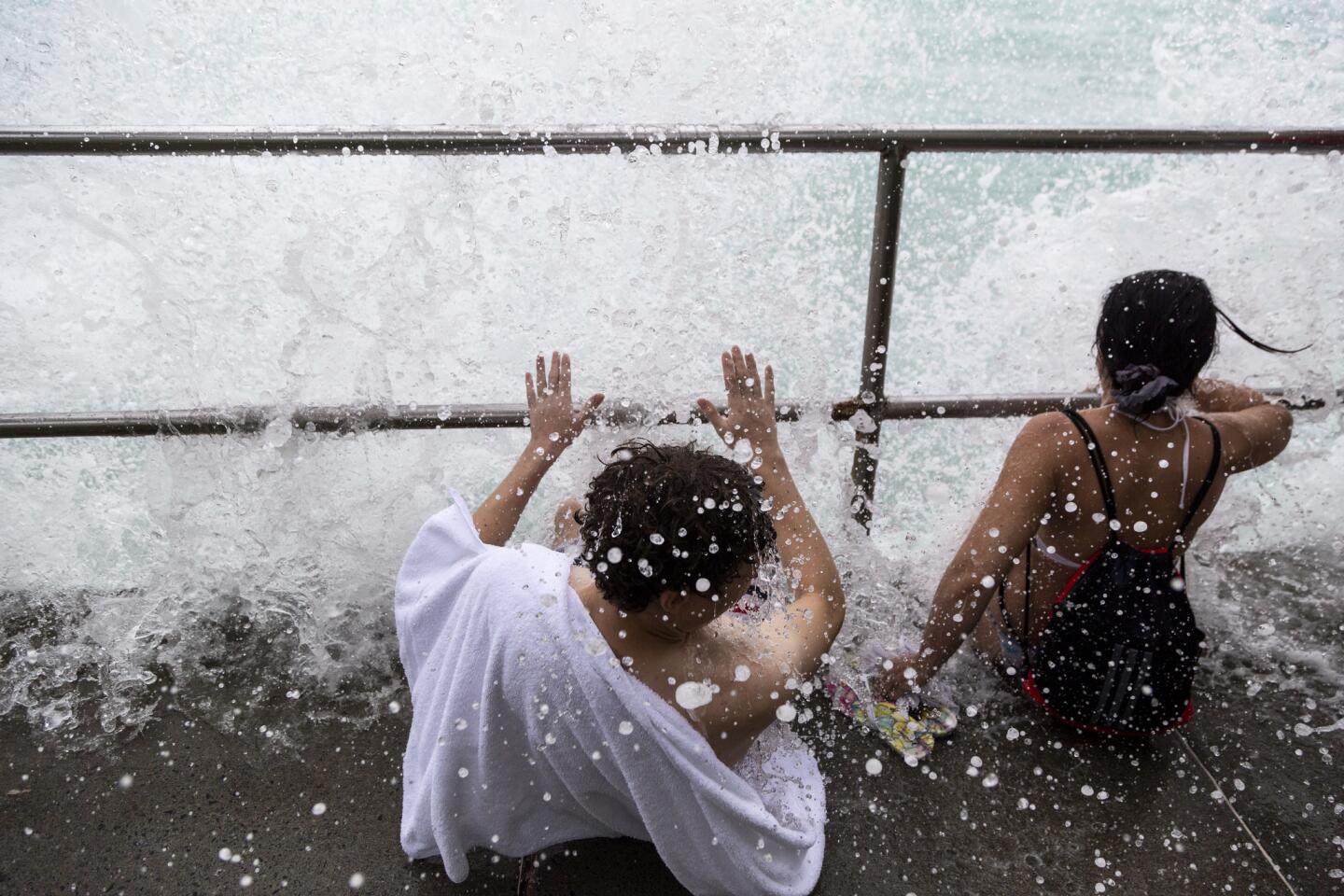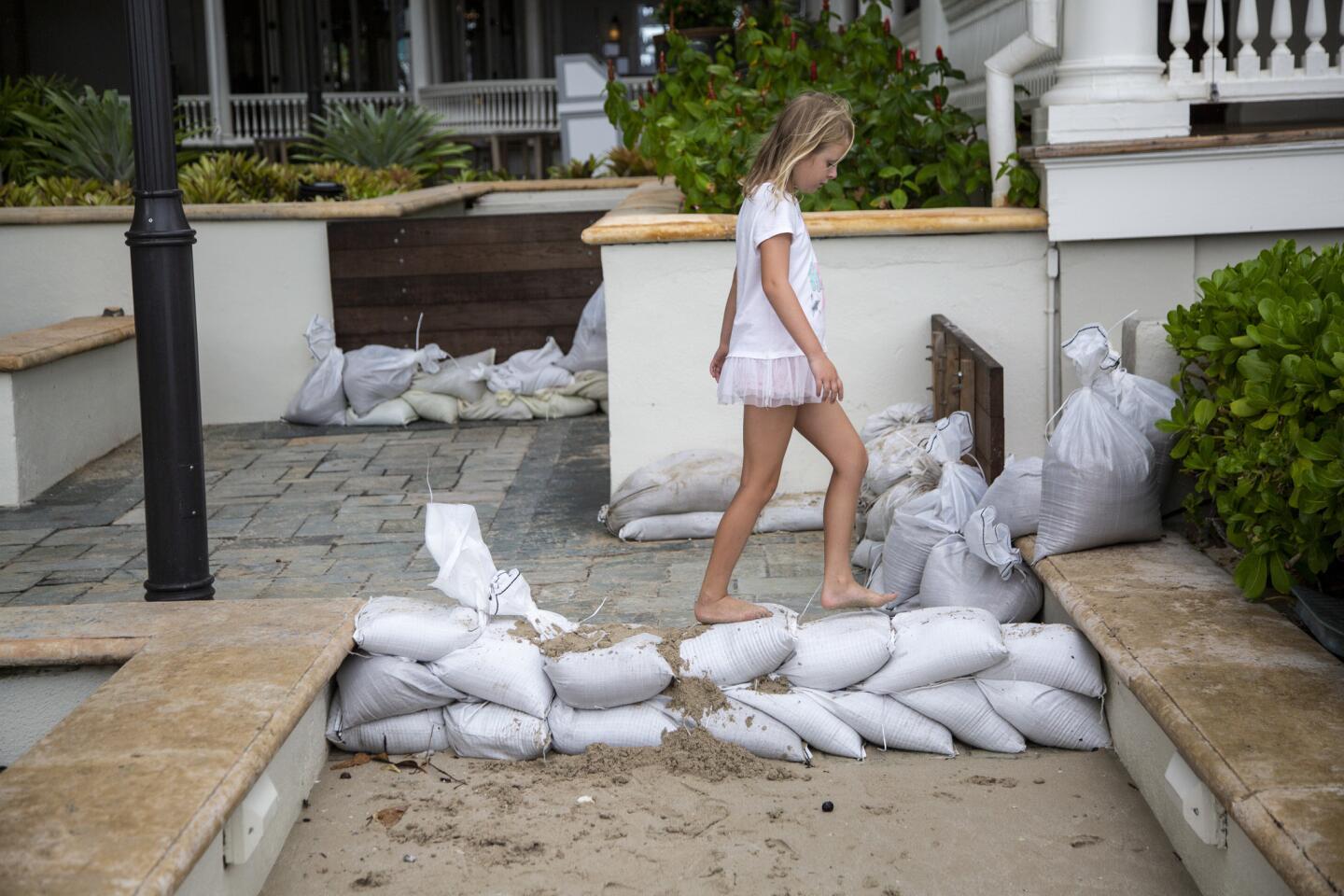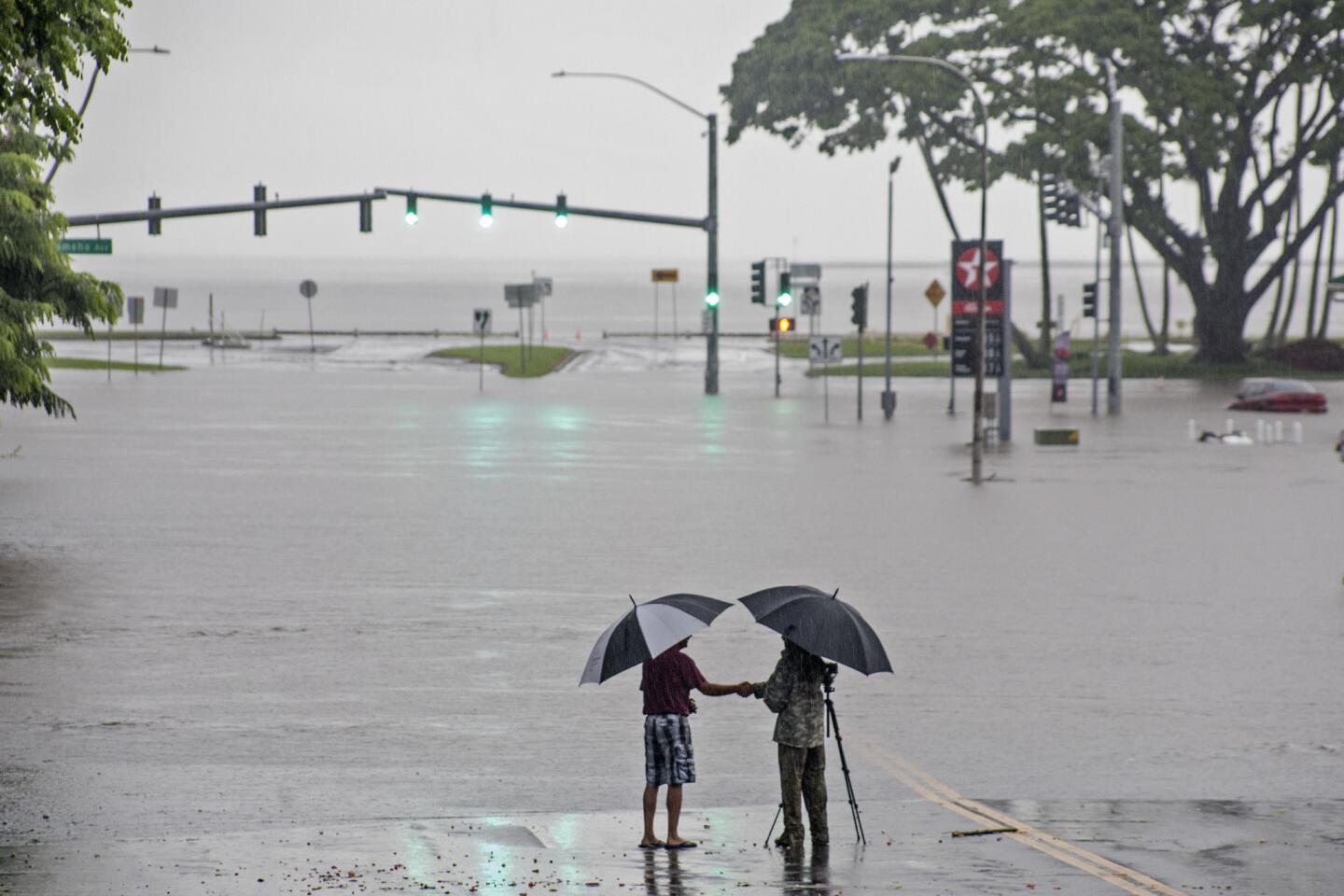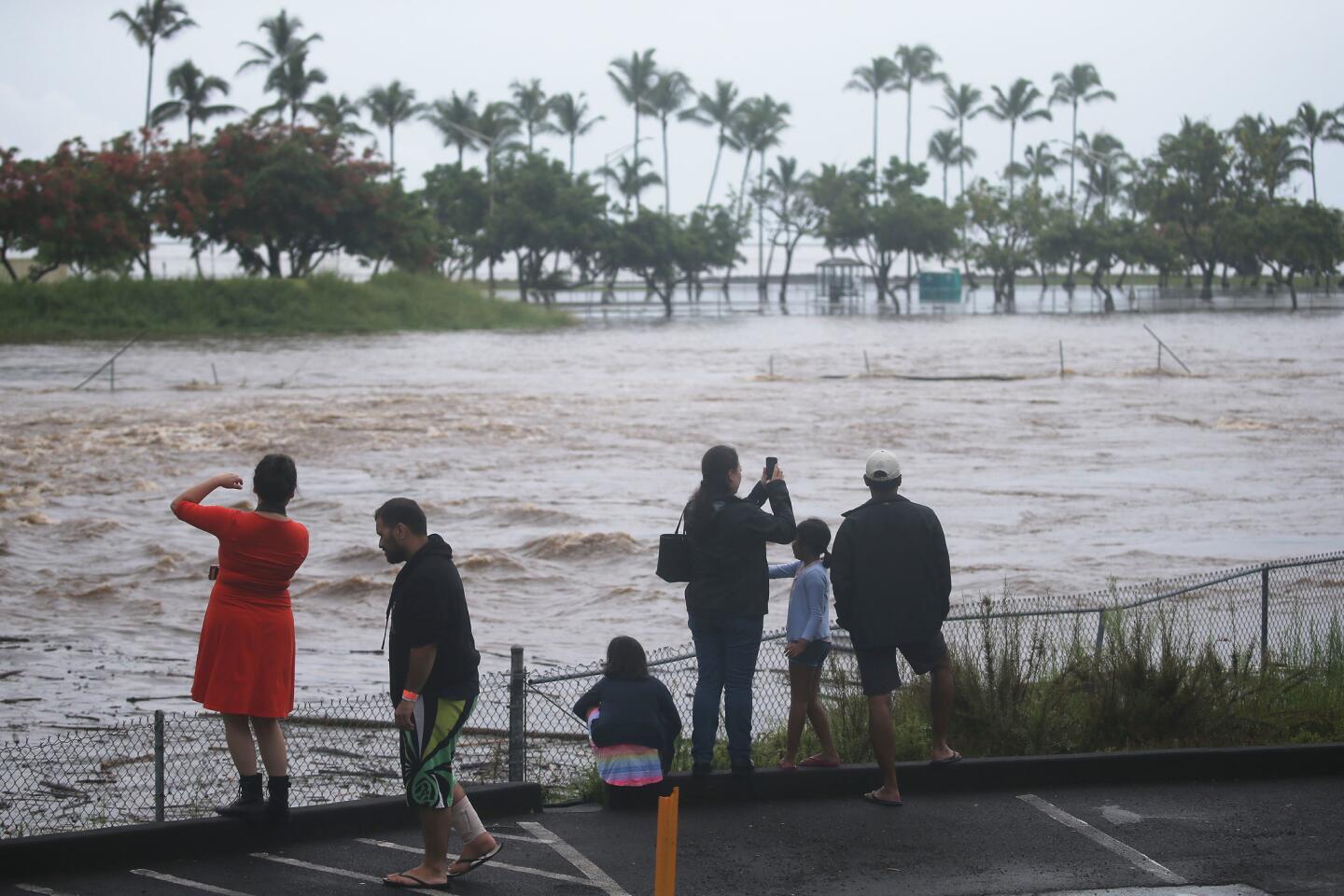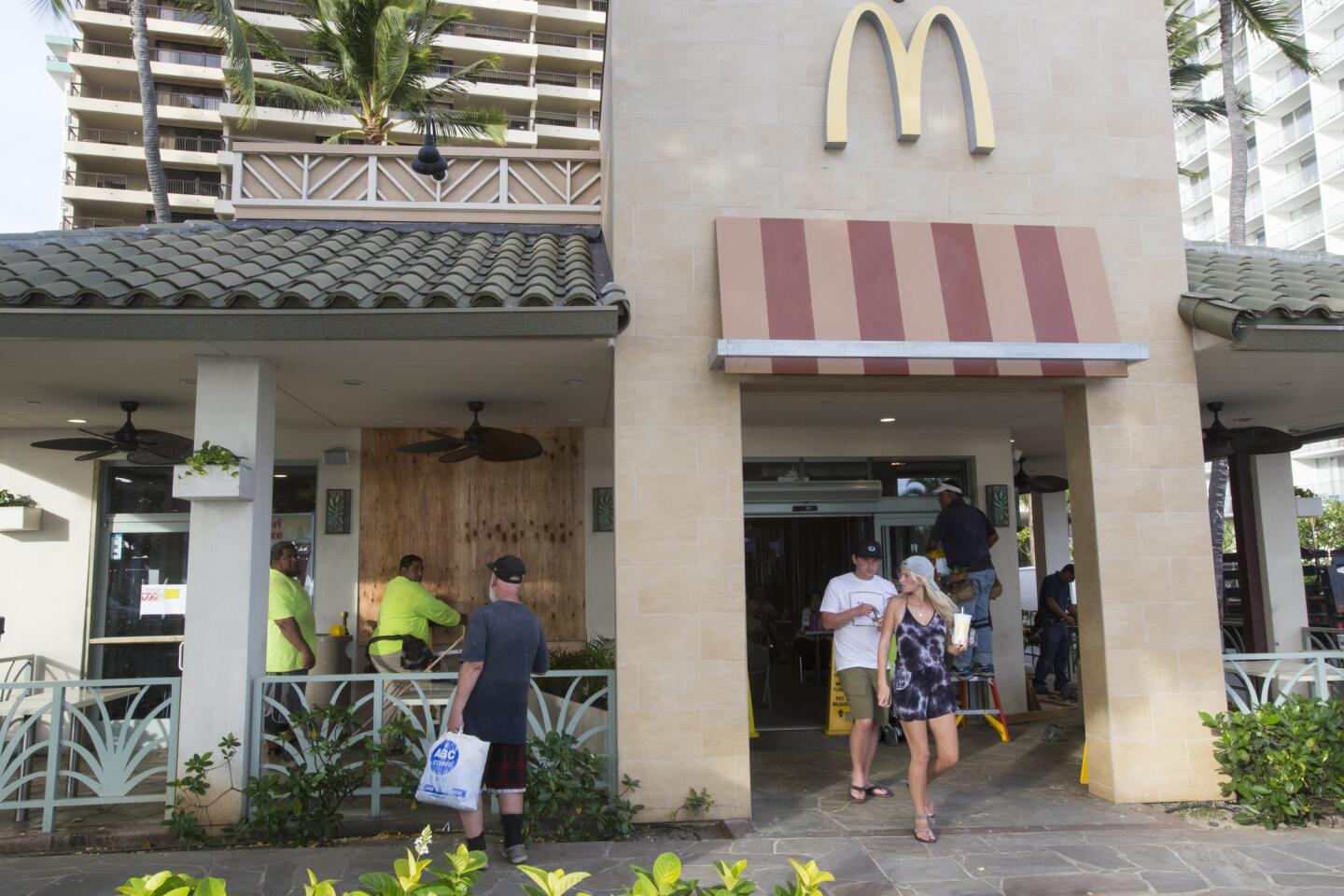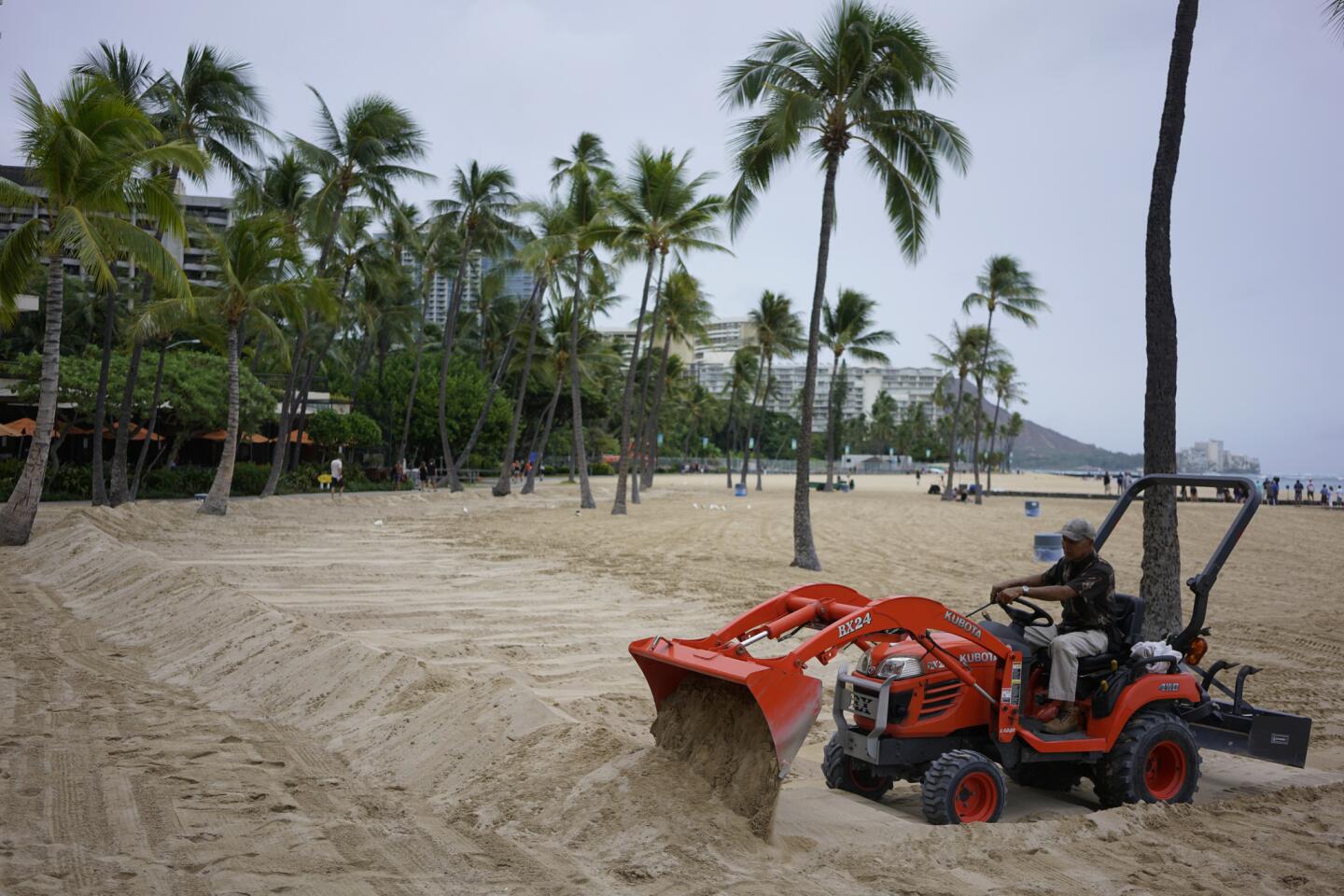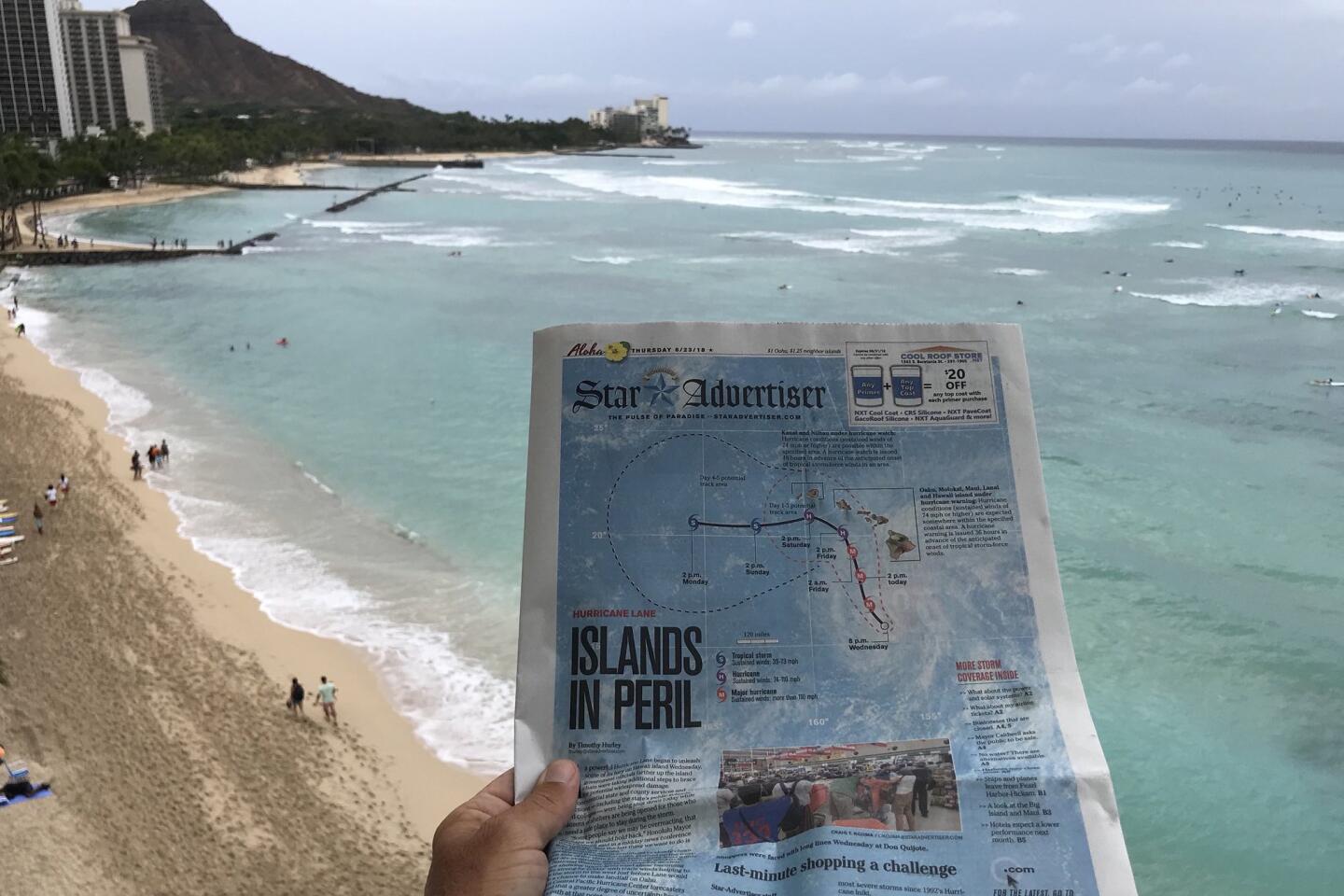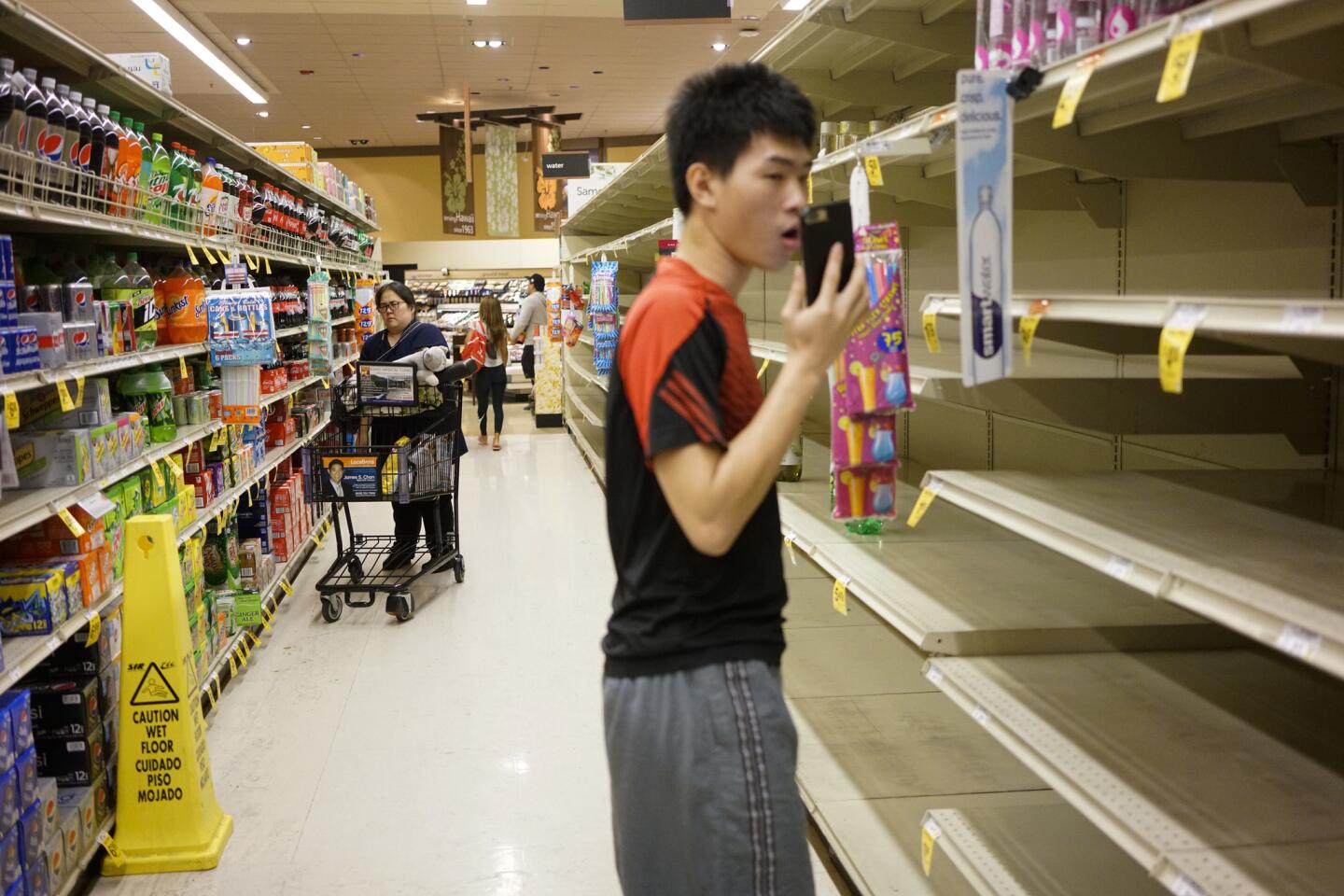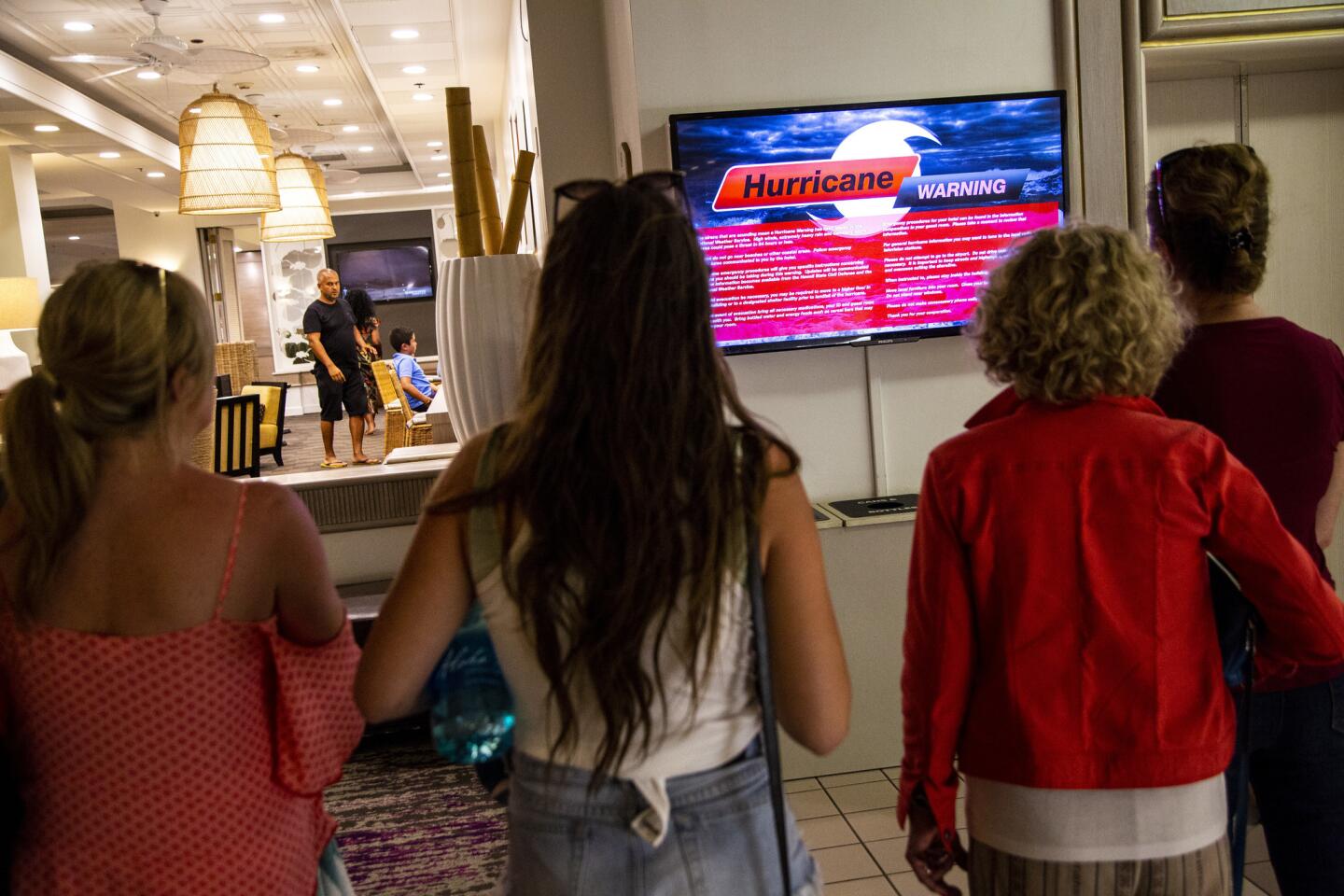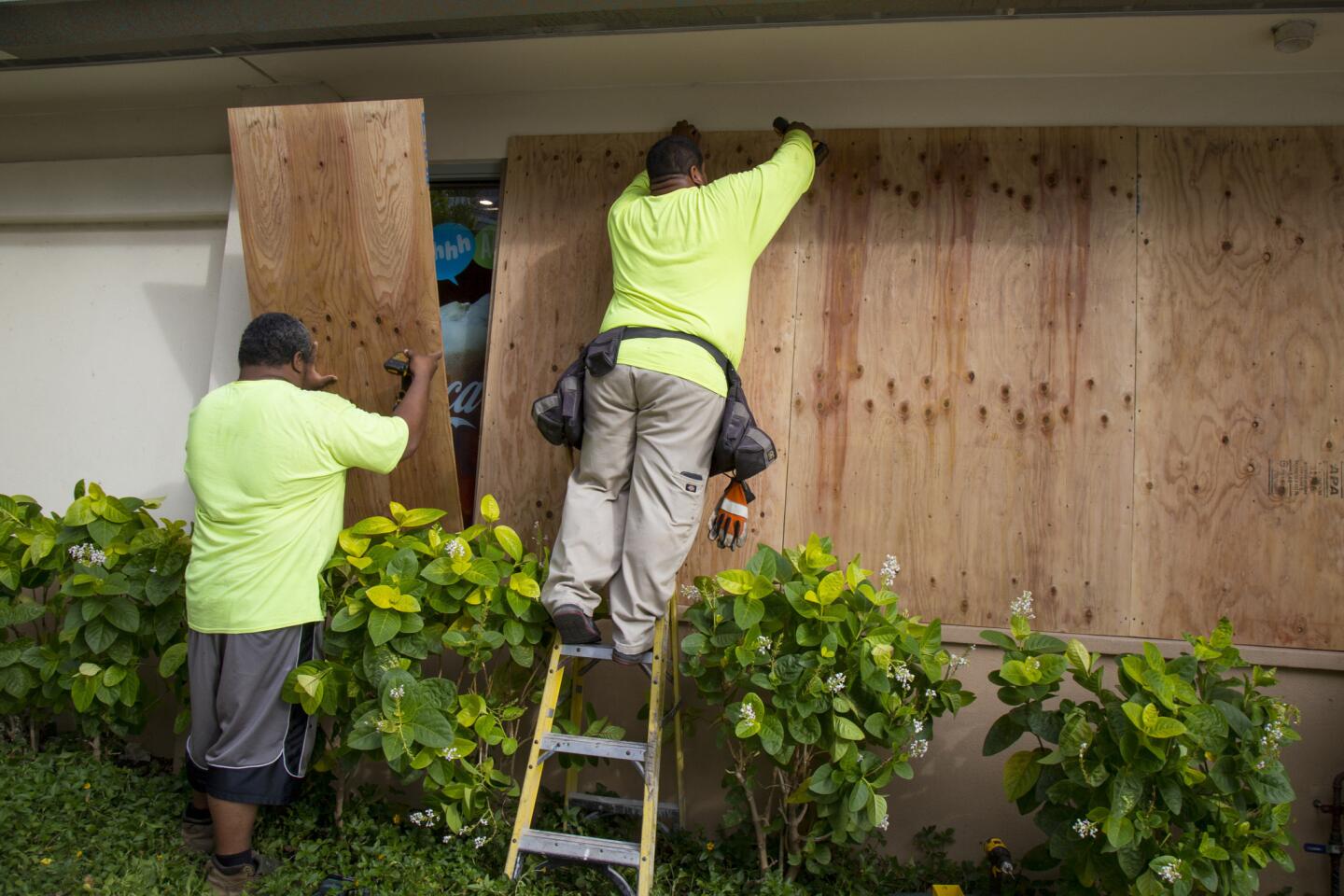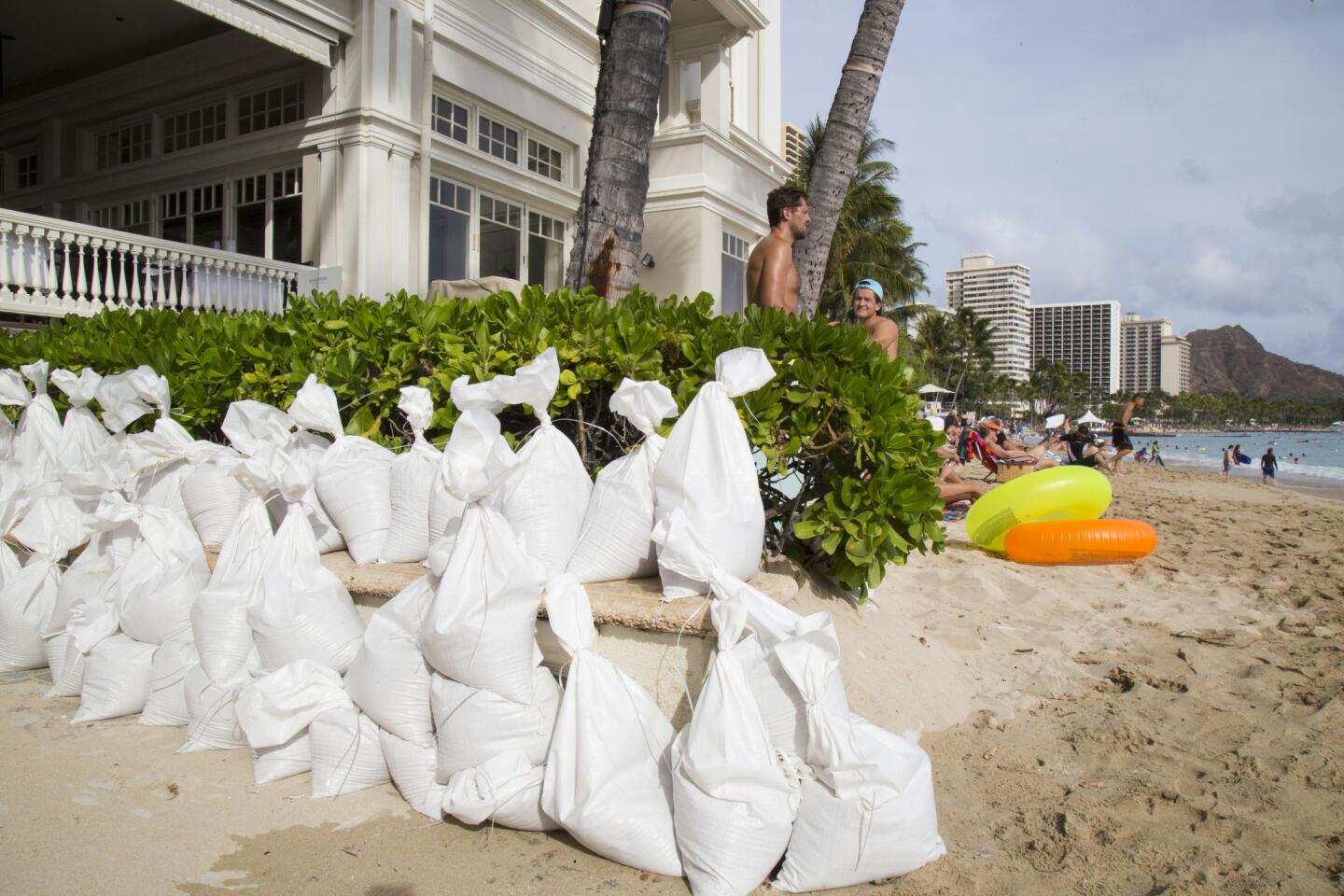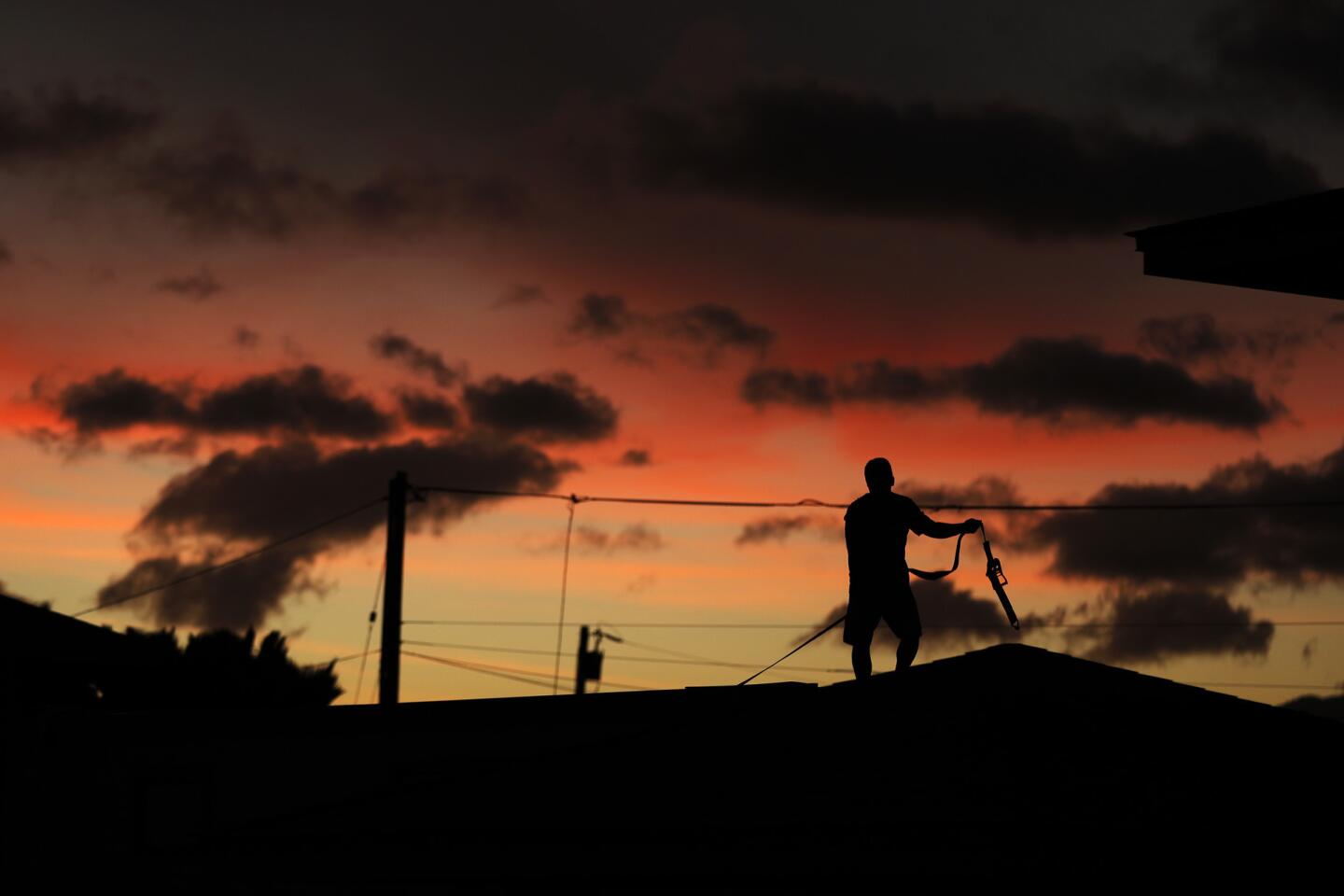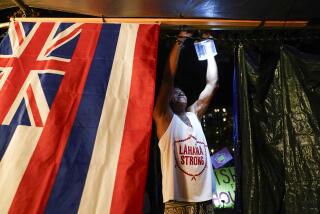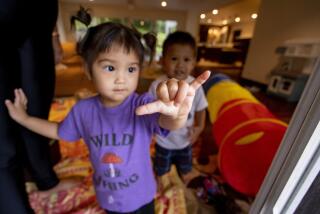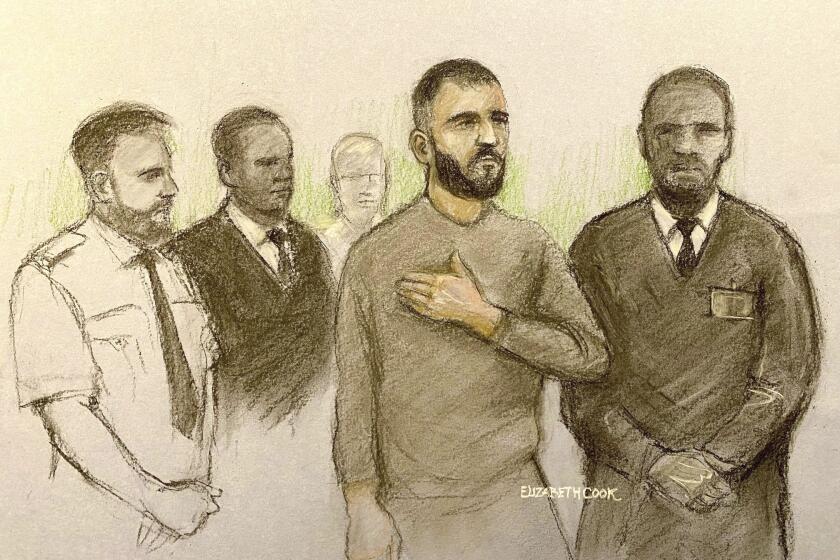Hurricane Lane is downgraded to Category 3, but Hawaiians are still bracing for a pounding
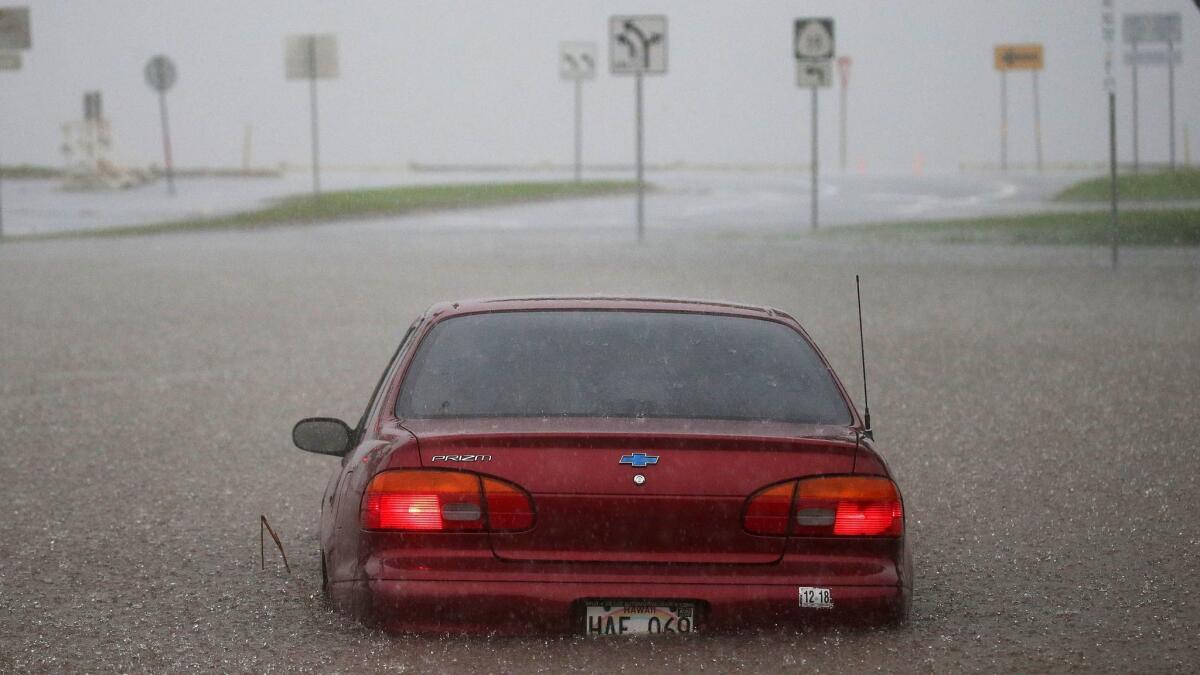
The powerful reality of Hurricane Lane began to settle in on Hawaiians on Thursday as Honolulu braced itself by opening emergency shelters, closing beaches and parks, canceling school for the remainder of the week and putting nonessential government workers on leave.
But even amid that preparation and images of flooding on the Big Island, meteorologists reported that Lane had weakened to a Category 3 storm by late Thursday afternoon. Forecast models showed it continuing to head north before veering west — with the eye running just west of the shores of the island chain — though its ultimate trajectory remains uncertain.
“It has already shown signs of weakening,” National Weather Service meteorologist Leigh Anne Eaton said. “It is still expected to pass dangerously close to the island [of Oahu] as a hurricane on Friday.”
But whether its strength would continue to diminish was unclear.
The storm, which was a Category 4 hurricane hours earlier, had already dumped more than 20 inches of rain on parts of the Big Island over the previous 30 hours. Eaton said Hilo International Airport got 15 inches. Some roads on the Big Island — as well as on Maui — were closed because of flooding.
The Big Island of Hawaii drew international attention earlier this year when the Kilauea volcano began its spectacular eruption, and dozens of homes have been destroyed as lava continued to creep across the landscape and pour into the ocean.
David Hess lost his home to the volcano when lava covered it in May. He said Thursday that he was just closing escrow on a new home in Pahoa when he began to scramble as Hurricane Lane approached. He said the rainfall was steady all day.
“There will be a downpour, and then it lightens up,” Hess said by phone. “The wind seems to be picking up, though.”
Though it’s only about 200 miles from Hilo on the Big Island to Honolulu, Hawaii’s capital was barely experiencing a drizzle early Thursday, and only a slight breeze could be detected on the city’s streets. Undeterred by the advancing storm, a few surfers paddled through the breakers.
Chase Mizumoto, 33, said he figured he’d be able to surf until midafternoon before things got too treacherous.
“It’s pretty good now. The waves are at about 7 feet,” said Mizumoto, who recalled riding the pre-storm waves in 1992 when Hurricane Iniki hit the islands. “They’re coming in at a weird angle, but that’s no problem.”
Yet there was a sense in Honolulu that trouble was fast approaching.
At 4 p.m., an outdoor warning siren wailed throughout the streets downtown — drawing the curious onto hotel balconies and momentarily stopping pedestrians in their tracks.
Parks and beaches were closed, so beaches were much emptier than normal. Stores closed early in the afternoon, and some businesses already had tape on windows and sandbags at the base of doors. And some hotels were telling guests to move patio furniture on balconies to the inside of their rooms.
Honolulu Mayor Kirk Caldwell on Twitter urged people to prepare for the storm and to remain home if possible. Buses were scheduled to be taken out of service by 6 p.m. Thursday.
“We do not want people out on the streets as Hurricane Lane approaches,” the mayor said. “We’re using a lot of caution here.”
Shelters for the homeless were opened up Thursday morning on Oahu as well. They opened Wednesday on the Big Island.
“Everyone is starting to buckle down at this point,” said Christyl Nagao, who lives on the island of Kauai. “Our families are here. We have businesses and this and that. You just have to man your fort and hold on tight.”

“Whenever possible, the public should plan to shelter in place or stay with family or friends in homes outside of these hazard areas that were designed, built, or renovated to withstand anticipated conditions,” the city and County of Honolulu said in a news release.
The 20 shelters on Oahu are pet friendly, and someone from the Humane Society will be on hand to assist with animals, authorities said.
The Federal Emergency Management Agency said it has several barges stocked with food, water and other supplies that it moved into the region ahead of Hurricane Hector, which skirted past the islands more than a week ago, according to FEMA Administrator Brock Long.
The Navy was moving its ships and submarines out of Hawaii. All vessels not undergoing maintenance were being positioned to help respond after the storm, if needed.
The state was also seeing help arrive from the mainland.
Late Wednesday night, 36 members of California Urban Search and Rescue Task Force 3 — sponsored by the Menlo Park Fire Protection District — arrived to provide assistance as the hurricane approached.
In a statement, Menlo Park Fire Chief Harold Schapelhouman said the unit was last sent to Hawaii for Hurricane Iniki in 1992.
Hurricanes are ranked from 1 to 5 according to the Saffir-Simpson Hurricane Wind Scale. Earlier Thursday, Hurricane Lane was a Category 4, which means it packed maximum sustained winds between 130 and 156 mph. Hours later when it was downgraded to a Category 3, wind speeds topped out at 125 mph.
Unlike Florida or Texas, where residents can get in their cars and drive hundreds of miles to safety, there’s little room to run in Hawaii.
Melanie Davis, who lives in a suburb outside Honolulu, said she was gathering canned food and baby formula.
“We’re getting some bags of rice and, of course, some Spam,” she said of the canned meat that’s popular in Hawaii.
She was organizing important documents into a folder — birth and marriage certificates, Social Security cards, insurance paperwork — and making sure her three children, all under 4, have flotation devices such as swimming vests — “just in case.”
Hawaii Emergency Management Agency Administrator Tom Travis said there isn’t enough shelter space statewide and advised those who are not in flood zones to stay home.
Officials warned that the limited shelter space should be a “last resort” and isn’t designed to withstand winds greater than about 40 mph.
The central Pacific gets fewer hurricanes than many other regions, with about only four or five named storms a year. Hawaii rarely gets hit, though it’s had a few close calls in recent years.
“We’re planning on boarding up all our windows and sliding doors,” Napua Puaoi of Wailuku, on Maui, said after buying plywood at Home Depot.
Puaoi was 12 when Iniki hit 26 years ago.
“When it did happen, I just remember, pandemonium, it was all-out craziness,” she said.
At the Wailana Coffee House in downtown Honolulu, however, Hurricane Lane didn’t seem so threatening. Locals and tourists belted out “My Heart Will Go On” and “I Want It That Way” by the Backstreet Boys until 1 a.m. Thursday.
They said they planned to be there again Friday, when the full force of Lane is expected to arrive.
The Associated Press contributed to this report.
UPDATES:
8 :15 p.m.: This article was updated with the downgrading of the storm to a Category 3 hurricane and details about its projected path.
4:20 p.m.: This article was revised to update the rainfall total on Hawaii’s Big Island.
1:45 p.m.: This article was updated with comments from Chase Mizumoto, a local surfer.
1:20 p.m.: This article was updated with a staff report.
This article was originally published at 6:30 a.m.
More to Read
Start your day right
Sign up for Essential California for news, features and recommendations from the L.A. Times and beyond in your inbox six days a week.
You may occasionally receive promotional content from the Los Angeles Times.

